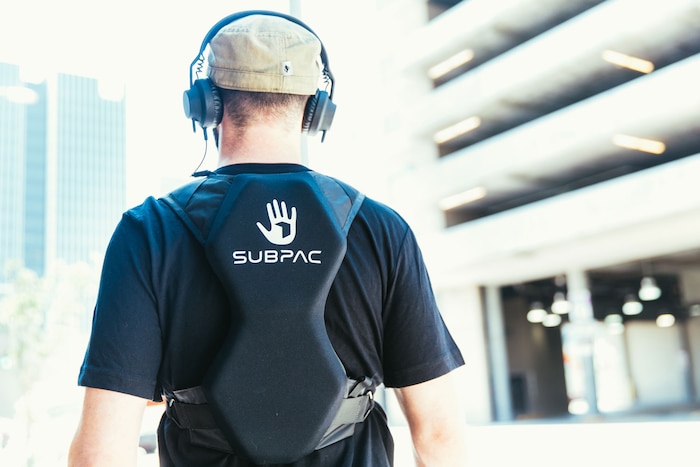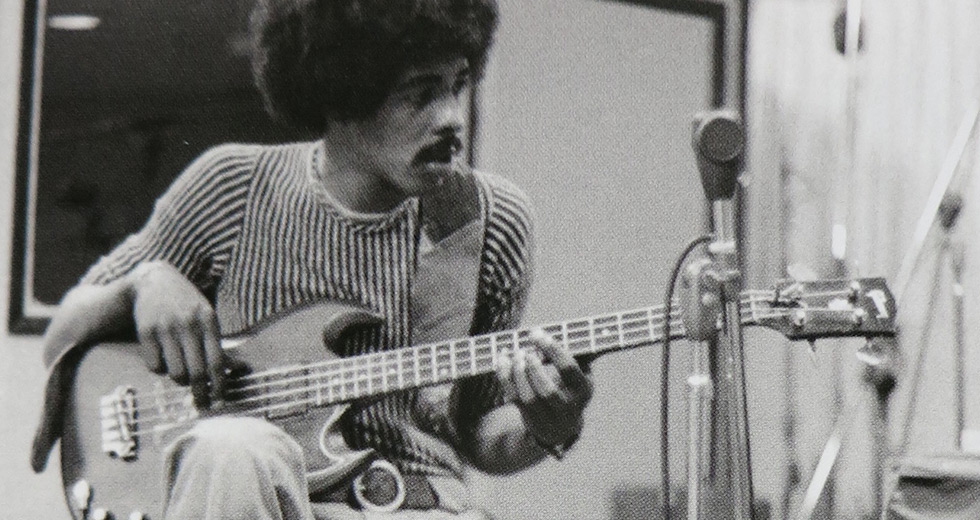Feeling Music
Emma Robertson talks to artists exploring the physical impact of sound

Standing in front of Anke Eckardt’s GROUND installation at the CTM Festival in Berlin, the low, gravelly rumble of concrete against concrete is almost overwhelming. The hallway-like structure’s base is made up of several shifting concrete slabs, meant to mimic the otherwise unfelt and unheard movement of tectonic plates. Once inside, the sound vibrates so powerfully that upon stepping out again, you feel for a moment like you’re floating.
GROUND makes clear the idea that all listening experiences are actually physical ones – sound is, after all, no more than vibrations. Dance music in particular is made for a listening experience akin to GROUND. The addition of a physical component, like feeling the rumble of bass through a club’s sound system, is entirely different and arguably more effective than listening to a mix on your laptop or on your iPod’s earbuds. As Panda Bear remarked in an interview with Electronic Beats earlier this year, club music “is most effective at club volumes,” echoing the sentiment that our understanding and appreciation of music changes based on how we hear it.
Humans come into contact with sound all the time. Our first tactile listening experience is in the womb, feeling our mother’s heartbeat. This kind of physicality continues into our everyday: We feel our own hearts beating, we hear the sound of our footsteps. By its very nature, direct contact with music through its natural vibrations introduces us to an experience we’ve been missing, one that is crucial to our proper understanding of it.

Physicality is tantamount to musical experience for John Alexiou, creator of The SubPac, a tactile listening device that transmits low-end frequencies through a portable cushion. “Physically feeling music gives you a deeper understanding or connection to the frequencies that are used in a production,” he explains. “Having a tactile reference locks you into a groove.”
In a time when music often acts as background noise, The SubPac uses physical representations of audio to make music more present and more powerful. “When you’re locked into a full, immersive experience, like with The SubPac, you’re not checking your phone for messages or chatting with people,” Alexiou continues. “You’re closer to music, and not just literally. You actually have more appreciation for this sound when you’re locked in, when you feel it.”
Experimental producer Ben Vida has used the concept of immersive listening to his advantage in Damaged Particulates, an audio piece he performs live to an audience strapped in to SubPacs. “It’s important to remember that the goal is not just to illuminate the audible low frequencies, but to have them function as a unique voice of their own,” Vida explains, “A voice that is composed with the consideration that they will be received and understood through the body.” With music performance, this unique voice is crucial in providing something that the audience can only garner from a live show. “Live performance depends on the promise of a physical experience different from what the audience can get at home,” Vida continues, “This doesn’t have to mean high amplitude or heavy bass – the physical experience of hearing an acoustic string quartet playing a Morton Feldman piece can be as much of a body experience as a dub sound system.”
For Alexiou, the immersive listening debate is easily put to rest. “Humans can hear down to roughly 20Hz. If you look at the frequency response of many headphones and some speakers, they often rate their range somewhere close to that. The reality, however, is, you can rarely have the power and privacy to be able to drive them appropriately. In the case of headphones, sound is only hitting your ears, not your body, something any sound system enthusiast knows the limitations of all too well. It's the feeling that matters.”
Physical reactions to music are also the result of psychological experience, like getting chills during a beautiful live performance. “I have memories of physical associations with certain shows I have seen,” Vida says. “These physical associations are based in nostalgia, though. It is more of an emotional and psychological engagement than a physical one.” With that in mind, adding a physical component to our listening experience heightens our emotional engagement, and our memories of that experience become more vivid.
If GROUND is any indication, the interplay of senses influences our listening experience and ultimately, our memories of that experience. “Playing with physicality in music and art naturally means that we are playing with manipulation of people and their memories,” Eckhardt explains. “With GROUND, sound is directly connected to the visitor’s body, and becomes physical memory in that instant.” Where dance music is concerned, Alexiou has the final say: “Most electronic music is produced for a live environment – for clubs, stadiums, festivals. In this era of docking stations, laptop speakers, ear buds, and low resolution file sharing, we often forget just how impactful music can be.”

